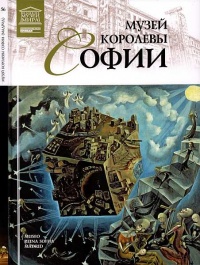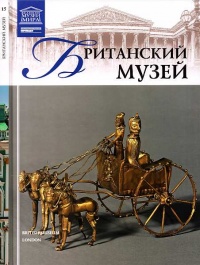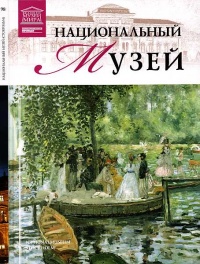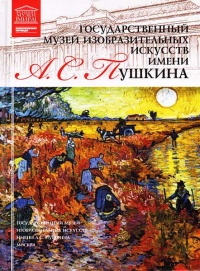Читать книгу "Иисус и его мир. Новейшие открытия - Крейг Эванс"
Шрифт:
Интервал:
Закладка:
16 Об аутентичности отрывка об Иисусе у Флавия см. John P. Meier, “Jesus in Josephus: A Modest Proposal”, CBQ52 (1990), pp. 76-103; Steve Mason, Josephus and the New Testament: Second Edition (Peabody, MA: Hendrickson, 2003), pp. 225–236. Мейсон – выдающийся специалист по трудам Флавия.
17 О значении правдоподобия в исторических исследованиях см. Louis Gottschalk, “The Historian and the Historical Document”, in Louis Gottschalk, Clyde Kluckhorn and Robert Angell, The Use of Personal Documents in History, Anthropology and Sociology (Bulletin 53; New York: Social Science Research Council, 1945), pp. 35–38. Готт-шальк отождествляет правдоподобие с надежностью. Шервин-Уайт говорит об этом принципе так: «Главная причина, по которой им [Евангелиям] можно доверять, заключается в том, что, если сказать кратко, их достоверность подтверждают внешние источники» (Roman Society and Roman Law in the New Testament: The Sarum Lectures 1960–1961 (Oxford: Oxford University Press, 1963), pp. 186–187).
18 Об использовании Евангелий в археологии и истории см. Eric M. Meyers (ed.), Galilee through the Centuries: Confluence of Cultures (Duke Judaic Studies 1; Winona Lake, IN: Eisenbrauns, 1999); Sean Freyne, Galilee and Gospel: Collected Essays (WUNT 125; Tubingen: Mohr Siebeck, 2000); Mark A. Chancey, Greco-Roman Culture and the Galilee of Jesus (SNTSMS 134; Cambridge: Cambridge University Press, 2005); James H. Charlesworth (ed.), Jesus and Archaeology (Grand Rapids: Eerdmans, 2006).
1. В тени Сепфориса. Назарет, в котором Иисус вырос
1 Отчет о раскопках в районе священного грота базилики Благовещения см.: Bellarmino Bagatti, Excavations in Nazareth: Vol 1, From the Beginning till the XII Century (2 vols, Publications of the Studium Biblicum Franciscanum 17; Jerusalem: Franciscan Printing Press, 1969), pp. 174–218.
2 Относительно идеи о детстве и юности Иисуса, проведенных в глуши, см. Joseph Klausner, Jesus of Nazareth: His Life, Times and Teaching (London: George Allen & Unwin, 1925), pp. 236–237. Кляузнер поэтически говорит об Иисусе, которого «от большого мира отделяли горы, так что он жил в окружении красоты природы». Но даже и исследователи недавнего времени продолжают утверждать, что Иисус вырос в изолированном селе. См. E. P. Sanders, «Jesus: His Religious “Type”», Reflections (1992), pp. 4-12. Сандерс утверждает, что Иисусу нужно было идти из Назарета полдня, чтобы добраться до Сепфориса. На самом же деле этот путь занимает всего один час с небольшим. Тем не менее Сандерс справедливо говорит, что Иисус не был «горожанином» и что он, по-видимому, избегал городов. См. E. P. Sanders, The Historical Figure of Jesus (London and New York: Penguin, 1993), p. 12.
3 О распространении гончарных изделий в Галилее I века см. James F. Strange, “The Sayings of Jesus and Archaeology”, in James H. Charlesworth and Loren L. Johns (eds), Hillel and Jesus: Comparisons of Two Major Religious Leaders (Minneapolis: Fortress, 1997), pp. 291–305, esp. 301–302. Источник изделий помог установить нейтронно-активационный анализ.
4 Об Иисусе как иудейском кинике см. John Dominic Crossan, The Historical Jesus: The Life of a Mediterranean Jewish Peasant (San Francisco: HarperCollins, 1991), pp. 421–422; цитаты со с. 421.
5 Мнения ученых, считающих гипотезу «Иисус – киник» неубедительной, см. David E. Aune, “Jesus and Cynics in First-Century Palestine: Some Critical Considerations”, in Charlesworth and Johns (eds), Hillel and Jesus, pp. 176–192; Hans Dieter Betz, “Jesus and the Cynics: Survey and Analysis of a Hypothesis”, JR 74 (1994), pp. 453–475; Christopher M. Tuckett, “A Cynic Q?”, Bib 70 (1989), pp. 349–376; Q and the History of Early Christianity: Studies on Q (Edinburgh: T.&T. Clark, 1996), pp. 368–391; Ben Witherington III, Jesus the Sage: The Pilgrimage of Wisdom (Minneapolis: Fortress, 1994), pp. 123–143; Craig A. Evans, “The Misplaced Jesus: Interpreting Jesus in a Judaic Context”, in Bruce D. Chilton, Craig A. Evans and Jacob Neusner (eds), The Missing Jesus: Rabbinic Judaism and the New Testament. New Research Examining the Historical Jesus in the Context of Judaism (Leiden and Boston: Brill, 2002), pp. 11–39, esp. 14–27.
6 Перечисление параллелей между Иисусом и киниками см. F. Gerald Downing, Christ and the Cynics: Jesus and Other Radical Preachers in First-Century Tradition (JSOT Manuals 4; Sheffield: JSOT Press, 1988).
7 Об иудейском характере Галилеи и Сепфориса см.: James F. Strange, “First Century Galilee from Archaeology and from the Texts”, in Douglas R. Edwards and C. Thomas McCollough (eds), Archaeology and the Galilee: Texts and Contexts in the Graeco-Roman and Byzantine Periods (Atlanta: Scholars Press, 1997), pp. 39–48; Mark A. Chancey, The Myth of a Gentile Galilee (SNTSMS 118; Cambridge: Cambridge University Press, 2002); Greco-Roman Culture and the Galilee of Jesus (SNTSMS 134; Cambridge: Cambridge University Press, 2005).
8 Аргументы в пользу существования театра во времена Иисуса и в пользу соответствующих аллюзий в его словах – см. Richard A. Batey, “Jesus and the Theatre”, NTS 30 (1984), pp. 563–574; James F. Strange, “Some Implications of Archaeology for New Testament Studies”, in James H. Charlesworth and Walter P. Weaver (eds), What Has Archaeology To Do with Faith? (Faith and Scholarship Colloquies; Philadelphia: Trinity Press International, 1992), pp. 23–59, esp. 4445. Бейти, Стрендж и другие археологи по находкам керамики и монет делают вывод о существовании театра в начале I века. См. James F. Strange, “Six Campaigns at Sepphoris: The University of South Florida Excavations, 1983–1989”, in Lee I. Levine (ed.), The Galilee in Late Antiquity (New York: Jewish Theological Seminary of America, 1992), pp. 339–355, esp. 342–343; Richard A. Batey, “Did Antipas Build the Sepphoris Theater?”, in James H. Charlesworth (ed.), Jesus and Archaeology (Grand Rapids: Eerdmans, 2006), pp. 111–119.
9 Слово plateia используется в раввинистической литературе (y. Ketub. 1.10) как заимствованное слово в контексте, где речь идет о городе Сепфорисе, гордившемся своим театром. Подробнее см. у Strange, “Some Implications of Archaeology”, pp. 44, 57–58, n. 83.
10 О раскопках на месте капернаумской синагоги см. James F. Strange, “Synagogue Where Jesus Preached Found at Capernaum”, BAR 9/6 (1983), pp. 24–31. Подробнее об этой синагоге мы поговорим в главе 2.
11 О так называемом доме Петра см.: James F. Strange, “Has the House where Jesus Stayed in Capernaum Been Found?” BAR 8/6 (1982), pp. 26–37.
12 Об офицере из Капернаума см. John Dominic Crossan and Jonathan Reed, Excavating Jesus (San Francisco: HarperCollins, 2001), pp. 87–89. О датировке римской бани II веком см. Jonathan Reed, Archaeology and the Galilean Jesus: A Re-examination of the Evidence (Harrisburg, PA: Trinity Press International, 2000), pp. 155–156.
Внимание!
Сайт сохраняет куки вашего браузера. Вы сможете в любой момент сделать закладку и продолжить прочтение книги «Иисус и его мир. Новейшие открытия - Крейг Эванс», после закрытия браузера.




